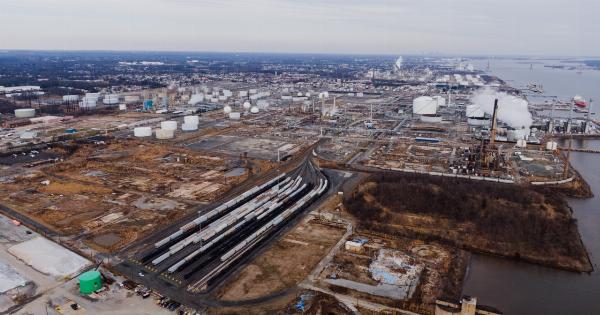Air pollution poses a grave threat to our health and the environment at large. Despite being invisible and often unnoticed, it silently pervades every breath we take, affecting us both on an individual and global scale.
This article aims to shed light on the detrimental impacts of air pollution, its sources, and potential solutions to mitigate this pressing issue.
The Invisible Menace
Air pollution refers to the presence of harmful substances in the atmosphere, resulting in adverse effects on living organisms and the natural environment. While often invisible to the naked eye, its consequences are far from unnoticeable.
Air pollution is responsible for a myriad of health problems, ranging from respiratory diseases and cardiovascular disorders to allergies and adverse birth outcomes.
The Culprits: Sources of Air Pollution
Air pollution arises from both natural and anthropogenic (human-made) sources. Natural sources include volcanic eruptions, wildfires, and dust storms.
However, it is the human activities that contribute significantly to the escalating air pollution crisis.
1. Industrial Emissions
Industries are among the prominent contributors to air pollution. The burning of fossil fuels such as coal, oil, and gas releases pollutants like sulfur dioxide, nitrogen oxides, and particulate matter into the atmosphere.
These emissions not only degrade air quality but also contribute to climate change, further exacerbating the environmental crisis we face.
2. Vehicle Exhaust
The ever-increasing number of automobiles on roads is a major contributor to air pollution.
Vehicle exhaust releases pollutants like carbon monoxide, nitrogen dioxide, and particulate matter, which not only contribute to the formation of smog but also pose a significant risk to human health. To tackle this issue, governments and organizations worldwide are promoting electric vehicles, investing in public transportation, and implementing stricter emission standards.
3. Agricultural Activities
Agricultural practices, particularly intensive livestock farming and the use of chemical fertilizers and pesticides, contribute to air pollution.
Animal waste emits various pollutants such as ammonia, which can react with other compounds to form fine particulate matter known as PM2.5. Additionally, the burning of crop residues, a common agricultural practice, releases harmful pollutants into the air.
4. Residential and Commercial Heating
The burning of fossil fuels for heating purposes in residential and commercial settings is another significant source of air pollution. This includes the burning of wood, coal, and various types of fuel oils.
The emissions from these activities release pollutants such as sulfur dioxide, nitrogen oxides, and particulate matter into the air, causing severe health issues, particularly in densely populated areas.
Health Implications
The health implications of air pollution are alarming and wide-ranging. Prolonged exposure to polluted air can lead to respiratory conditions such as asthma, chronic obstructive pulmonary disease (COPD), and lung cancer.
The fine particulate matter present in polluted air can penetrate deep into the respiratory system and enter the bloodstream, causing cardiovascular problems such as heart attacks, strokes, and high blood pressure.
Children, the elderly, and individuals with pre-existing respiratory and cardiovascular conditions are particularly vulnerable to the harmful effects of air pollution.
The impacts of air pollution go beyond physical health, as studies have also linked it to adverse neurological and mental health effects.
Environmental Impact
Air pollution not only affects human health but also has severe consequences for the environment. The release of greenhouse gases and pollutants exacerbates global warming and contributes to climate change.
This, in turn, leads to rising temperatures, melting ice caps, altered weather patterns, and an increased frequency of extreme weather events.
Air pollution also poses a significant threat to ecosystems. Acid rain, which occurs when pollutants like sulfur dioxide and nitrogen oxides mix with water vapor in the atmosphere, harms forests, lakes, and aquatic life.
Additionally, prolonged exposure to air pollutants can damage vegetation and disrupt ecosystems, posing a threat to biodiversity.
Fighting Back: Solutions to Air Pollution
Addressing air pollution requires a multi-faceted approach involving individuals, communities, governments, and international bodies. Here are some potential solutions to mitigate this silent killer:.
1. Transition to Renewable Energy
Reducing reliance on fossil fuels and transitioning to renewable energy sources like solar, wind, and hydroelectric power can significantly reduce air pollution.
Encouraging the use of clean energy not only reduces harmful emissions but also promotes sustainable development and energy independence.
2. Improved Industrial Practices
Industries can adopt cleaner production methods, such as using advanced technologies to reduce emissions, implementing efficient waste management systems, and promoting sustainable practices.
Governments can incentivize and enforce stricter regulations and emission standards to ensure industries prioritize environmental protection.
3. Efficient Transportation Systems
Investing in public transportation, promoting carpooling, and prioritizing the use of electric vehicles are crucial steps towards reducing air pollution from transportation.
Governments can provide subsidies and tax incentives to make electric vehicles more accessible and affordable. Additionally, creating pedestrian-friendly cities and improving cycling infrastructure can further encourage sustainable modes of transportation.
4. Encouraging Sustainable Agricultural Practices
Promoting organic farming, reducing the use of chemical fertilizers and pesticides, and implementing proper waste management techniques can help reduce agricultural contributions to air pollution.
Additionally, adopting sustainable livestock farming practices and supporting agroforestry can mitigate the environmental impact of agricultural activities.
5. Raising Awareness and Education
Creating awareness about the adverse effects of air pollution and the importance of individual actions is crucial in driving change.
Education campaigns, community initiatives, and school programs that highlight the causes and consequences of air pollution can inspire individuals to take proactive steps in their daily lives to reduce their carbon footprint.
Conclusion
Air pollution is undoubtedly a silent killer, threatening both human health and the environment.
To combat this escalating crisis, it is vital for individuals, communities, governments, and international organizations to come together and take concrete actions. By transitioning to clean energy sources, implementing stricter regulations, and promoting sustainable practices, we can strive towards cleaner air and a healthier future for generations to come.





























